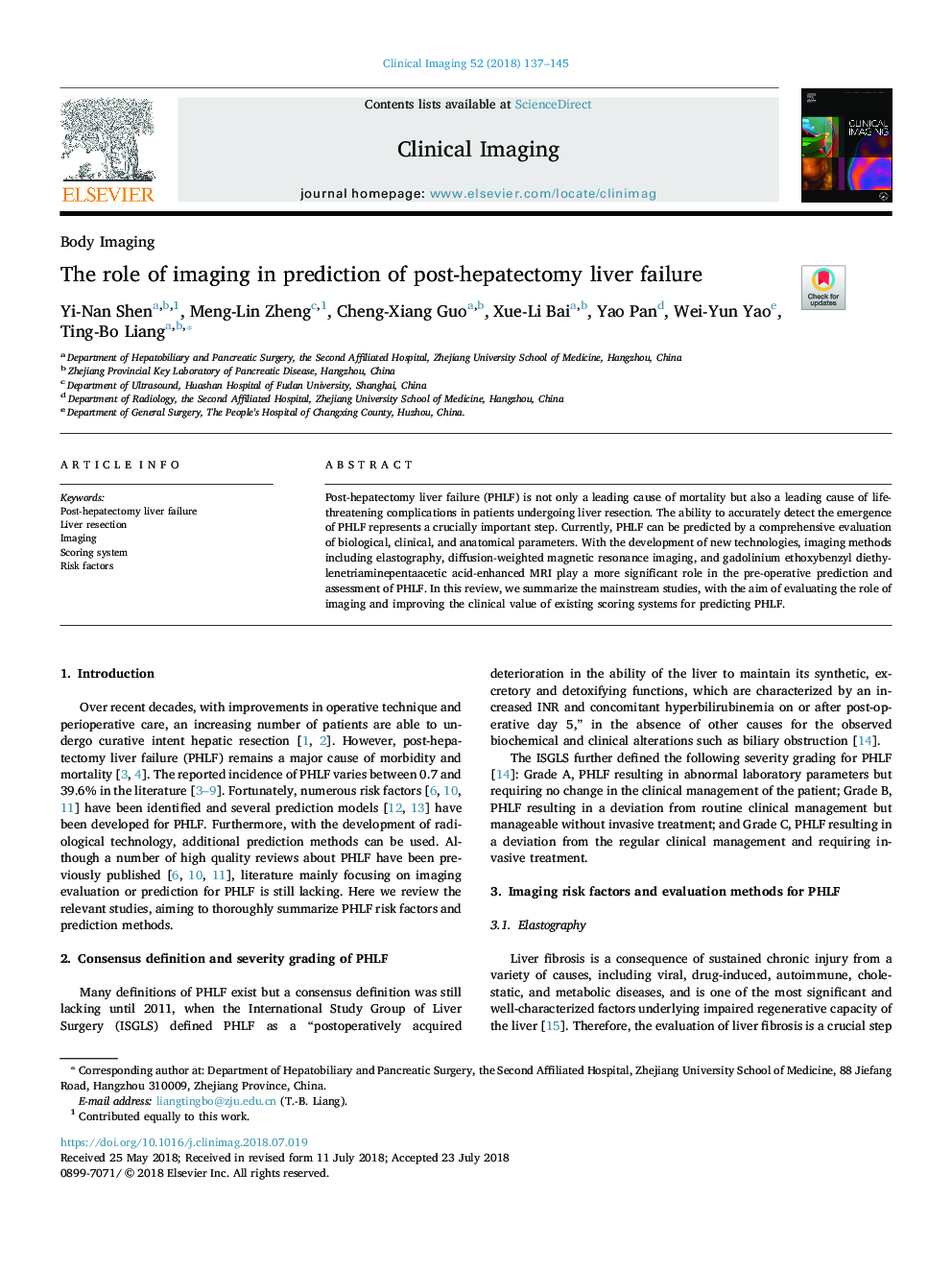| Article ID | Journal | Published Year | Pages | File Type |
|---|---|---|---|---|
| 8821257 | Clinical Imaging | 2018 | 9 Pages |
Abstract
Post-hepatectomy liver failure (PHLF) is not only a leading cause of mortality but also a leading cause of life-threatening complications in patients undergoing liver resection. The ability to accurately detect the emergence of PHLF represents a crucially important step. Currently, PHLF can be predicted by a comprehensive evaluation of biological, clinical, and anatomical parameters. With the development of new technologies, imaging methods including elastography, diffusion-weighted magnetic resonance imaging, and gadolinium ethoxybenzyl diethylenetriaminepentaacetic acid-enhanced MRI play a more significant role in the pre-operative prediction and assessment of PHLF. In this review, we summarize the mainstream studies, with the aim of evaluating the role of imaging and improving the clinical value of existing scoring systems for predicting PHLF.
Related Topics
Health Sciences
Medicine and Dentistry
Radiology and Imaging
Authors
Yi-Nan Shen, Meng-Lin Zheng, Cheng-Xiang Guo, Xue-Li Bai, Yao Pan, Wei-Yun Yao, Ting-Bo Liang,
